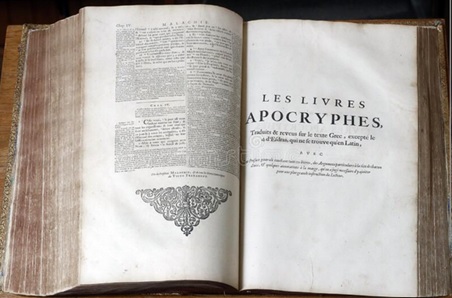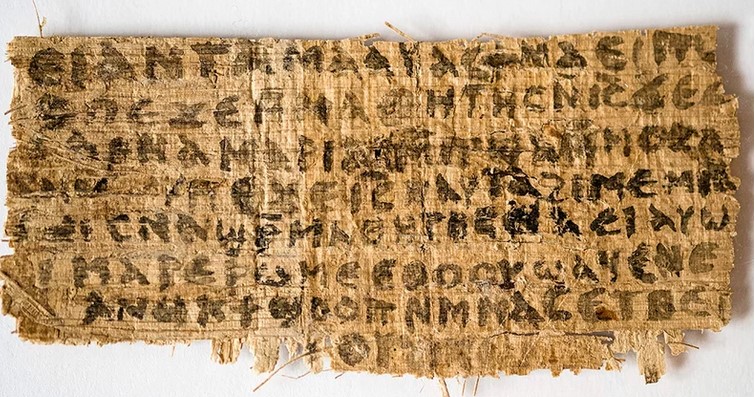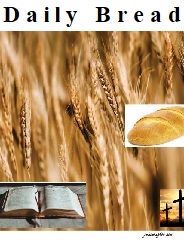The Epistle of Jude, in the Bible’s New Testament, is addressed to all believers of the gospel. Its design guards believers against the false teachers who had begun to creep into the Christian church. They scattered dangerous tenets, attempting to lower all Christianity into a merely nominal belief and outward profession of the gospel. They denied the obligations of personal holiness and taught their disciples to live in sinful courses, at the same time flattering them with the hope of eternal life. Jude shows the vile character of these seducers and denounces their sentence.
The epistle concludes with warnings, admonitions, and counsel to believers. Jude warns of the judgments that come upon those who turn away from God. Jude counsels Church members to build up their faith and “keep [themselves] in the love of God” (Jude 1:21). The global message of Jude is that the church must work, locally all the way up to internationally, to defend the faith. False teaching leads to immorality, but true believers will persevere, by God’s grace, to the end.
Jesus’ Immediate Family

The church in Rome began formally celebrating Christmas on December 25 in the year 336, during the reign of the emperor Constantine. As Constantine had made Christianity the effective religion of the empire, some have speculated that choosing this date had the political motive of weakening the established pagan celebrations.
At birth, Jesus’ name, in Hebrew was “Yeshua” which translates to English as Joshua. The Hebrew word Joshua means “God is salvation.” According to legend, Jesus Christ was born on the night between 24 and 25 December in the year 0 of the Gregorian calendar. Christians all over the world therefore traditionally celebrate the birth of the Messiah and Son of God on this date as Christmas.
The New Testament contains two Christmas stories, not just one. They appear in Matthew 1–2 and Luke 1–2. The pre-Christian Germanic peoples, including the Anglo-Saxons and the Norse, celebrated a winter festival called Yule. Yule was held in the late December to early January period, yielding modern English yule, today used as a synonym for Christmas.
Saturnalia, held in mid-December, is an ancient Roman pagan festival honoring the agricultural god Saturn. Because of when the holiday occurred, near the winter solstice, Saturnalia celebrations are the source of many of the traditions we now associate with Christmas. Such traditions include wreaths, candles, feasting, and gift-giving. The origins of Christmas stem from both the pagan and Roman cultures. The Romans actually celebrated two holidays in December. The first was Saturnalia, which was a two-week festival honoring their god of agriculture Saturn. On December 25th, they celebrated the birth of Mithra, their sun god.
Jesus was a Jew. He was born to a Jewish mother, in Galilee, a Jewish part of the world. All of his friends, associates, colleagues, and disciples, were Jews. He regularly worshipped in Jewish communal worship, what we call synagogues.
Jesus’ Parents
In 2011, an Oxford scholar claimed that God had a wife, Asherah, whom the Book of Kings suggests was worshiped alongside Yahweh in his temple in Israel. This tarnishes Christianity as mythology (Rev. Dr. J Mike Howington, 1/9/2023).
Joseph (Hebrew: יוסף, romanized: Yosef; Greek: Ἰωσήφ, romanized: Ioséph) was a 1st-century Jewish man of Nazareth who, according to the canonical Gospels, was married to Mary, the mother of Jesus, and was the legal father of Jesus.
Mary, the mother of Jesus through the Holy Spirit’s immaculate conception, gave birth to Jesus. Mary was the wife of the Nazarene Carpenter, Joseph. Saint Joseph, Jesus’ adoptive earthly father, died at the age of 49 years (30 BC – 20 AD).
The Apocrypha (Catholic books not accepted as the canon of Scripture) text states that Joseph was miraculously blessed with mental and physical youth, dying at the age of 111. His oldest sons (Justus and Simon) get married and have children, and likewise, his two daughters get married and live in their own houses. Joseph’s death takes up a substantial portion of the text.

Roman Catholic dogma holds that Mary, the mother of Jesus, was “assumed” into heaven in bodily form. The Assumption, the question of whether or not Mary actually underwent physical death, remained open in the Catholic view until 1997. On 25 June 1997, Pope John Paul II said that Mary experienced natural death before her assumption into Heaven. According to Christianity.com, Mary was 46 to 49 years old when Jesus died. But Britannica states that she “flourished” from 25 B.C. to A.D. 75. Assuming this is about her lifespan, according to Britannica, Mary was approximately 54 to 59 years old when Jesus died.
Catholics do not view Mary, the Mother of Jesus, as equal to Christ, but rather venerate Mary because of her relationship to Christ. The Catechism of the Catholic Church (CCC) explains, “Mary’s role in the Church is inseparable from her union with Christ and flows directly from it” (Catechism of the Catholic Church, 964).
Two special factors rendered Mary impeccable or unable to sin. The first was her constant awareness of God, living always in His presence. The second was her reception of special and extraordinary graces. Saint Ambrose said that Mary is the icon of the Church. In other words, if you want to see a sort of miniature figurine of everything the Church is, look at Mary.
Jesus’ Siblings
Catholic Catechism teaches that a careful look at the New Testament shows that Mary, the mother of Jesus, kept her vow of virginity and never had any children other than Jesus. When Jesus was found in the Temple at age twelve, the context suggests that He was the only son of Mary and Joseph. Catholicism has long declared that when the Gospels described Jesus’ siblings, or the apostle Paul mentioned the “brothers of the Lord,” the words, translated from the Greek, really meant “cousins” or “relatives.” That careful look must ignore the literal translations of Matthew 13:55, Mark 6:3, and Jude 1:21.
The Bible’s Epistle of Jude, vs. 1, indicates that Jude and James were two of the four brothers of Jesus (Mark 6:3). James was the first brother of Jesus. The brothers of Jesus or the adelphoi (Greek: ἀδελφοί, translit. adelphoí, lit. “of the same womb”) are named in the New Testament as James, Jude, Simon, and Joses (a form of Joseph) (Matthew 13:55; Mark 6:3 and elsewhere). Unnamed sisters are mentioned in the books of Mark and Matthew.
James’ name always appears first in the lists of Jesus’ brothers, suggesting James was the eldest among Jesus’ brothers. In Jewish Antiquities (20.9.1), Josephus describes James as “the brother of Jesus who is called Christ.” (Flavius Josephus, Antiquities of the Jews, Book 20, chapter 9, verse 1, written in 93CE)
Jesus’ Wife and Children
In 2014 a book claimed that Jesus Christ was married to Mary Magdalene and had two children. But religious scholars say this interpretation of an ancient manuscript holds no credibility. Biblical gospels contain metaphorical references to Christ, saying He is a bridegroom. They mean He is married to the church and there is no reference to a real wife.
Historians Jacobovici and Pellegrino argue that Aramaic inscriptions reading “Judah, son of Jesus”, “Jesus, son of Joseph”, and “Mariamne”, a name they associate with Mary Magdalene, together preserve the record of a family group consisting of Jesus, his wife Mary Magdalene and son Judah.
On September 18, 2012, Harvard Professor of Divinity Karen King presented a scrap of papyrus that dates back to the fourth century. She told a gathering of scholars in Rome that written in Coptic was this surprising sentence: “Jesus said to them, ‘My wife…’ “

Some want the ceremony that celebrated the beginning of the alleged marriage of Jesus and Mary Magdalene to be viewed as a “holy wedding”. They want Jesus, Mary Magdalene, and their alleged daughter, Sarah, to be viewed as a “holy family”, in order to question traditional gender roles and family values.
The notion of a direct bloodline from Jesus and Mary Magdalene and its supposed relationship to the Merovingians, as well as to their alleged modern descendants, is strongly dismissed as pseudohistorical by a qualified majority of Christian and secular historians such as Darrell Bock and Bart D.
Some authors, taking up themes from the pseudohistorical book Holy Blood, Holy Grail, suggest that Sarah was the daughter of Jesus Christ and Mary Magdalene. These ideas were popularized by Dan Brown’s The Da Vinci Code, Eron Manusov’s Ahavah’s Dream, and The Maeve Chronicles by Elizabeth Cunningham.
After Jesus’ death, the most controversy around Mary Magdalene’s life unfolded. In all four Gospels, she is the first to witness Jesus after his resurrection. Believed to be the Jesus’ favorite by the apostles, Mary is asked to reveal secret teachings given to her by Jesus while consoling the apostles.
Mary Magdalene (sometimes called Mary of Magdala, or simply the Magdalene, or the Madeleine) was a woman who, according to the four canonical gospels, traveled with Jesus as one of His followers and was a witness to His crucifixion and resurrection. She is mentioned by name twelve times in the canonical gospels, more than most of the apostles and more than any other woman in the gospels, other than Jesus’ family. Mary’s epithet Magdalene may mean that she came from the town of Magadala, a fishing town on the western shore of the Sea of Galilee in Roman Judea.
Saint Mary Magdalene was venerated in the Catholic Church, Eastern Catholic Churches, Eastern Orthodox Churches, Oriental Orthodox Churches, Anglican Communion, Lutheranism, other Protestant churches, and the Baháʼí Faith. A feast of Mary Magdalene is held on July 22.
New Testament Apocrypha writings mention Mary Magdalene. Some of these writings were cited as scripture by early Christians. However, they were never admitted to the canon of the New Testament. Roman Catholic, Eastern Orthodox, and Protestant churches generally do not view these writings as part of the Bible. They are legendary, mythological, and not inspired by the Holy Spirit. In these apocryphal texts, Mary Magdalene is portrayed as a visionary and leader of the early movement whom Jesus loved more than he loved the other disciples. These texts were written long after the death of the historical Mary Magdalene. They are not regarded by bible scholars as reliable sources of information about her life.
Nonetheless, the texts have been frequently promoted in modern works as though they were reliable. Such works often support sensationalist statements about Jesus and Mary Magdalene’s relationship.
Mary Magdalene is known in some Christian traditions as the “apostle to the apostles.” Mary Magdalene is a central figure in later Gnostic Christian writings, including the Dialogue of the Savior, the Pistis Sophia, the Gospel of Thomas, the Gospel of Philip, and the Gospel of Mary. These texts portray Mary Magdalene as an apostle, as Jesus’ closest and most beloved disciple, and the only one who truly understood his teachings.
In the Gnostic texts or Gnostic gospels, Mary Magdalene’s closeness to Jesus results in tension with another disciple, Peter, due to her sex and Peter’s envy of the special teachings given to her. In the Gospel of Philip’s text, she is described as Jesus’ companion, as the disciple Jesus loved the most and the one Jesus kissed on the mouth, which has led some people to conclude that she and Jesus were in a relationship.
Some fiction portrays her as the wife of Jesus. Not only did they have licit sex, but they also produced an offspring. After Jesus was crucified, Mary fled Palestine for France, where her daughter, Sarah, was born. Some authors, taking up themes from the pseudohistorical book Holy Blood, Holy Grail, suggest that Sarah was the daughter of Jesus Christ and Mary Magdalene.
The portrayal of Mary Magdalene as a prostitute began in 591 when Pope Gregory I conflated Mary Magdalene, who was introduced in Luke 8:2, with Mary of Bethany (Luke 10:39) and the unnamed “sinful woman” who anointed Jesus’ feet in Luke 7:36–50. Pope Gregory’s Easter sermon resulted in a widespread belief that Mary Magdalene was a repentant prostitute or promiscuous woman.
Elaborate medieval legends from Western Europe then emerged, which told exaggerated tales of Mary Magdalene’s wealth and beauty, as well as of her alleged journey to southern Gaul (modern-day France). The identification of Mary Magdalene with Mary of Bethany and the unnamed “sinful woman” was still a major controversy in the years leading up to the Reformation, and some Protestant leaders rejected it.
During the Counter-Reformation, the Catholic Church emphasized Mary Magdalene as a symbol of penance. In 1969, Pope Paul VI removed the identification of Mary Magdalene with Mary of Bethany and the “sinful woman” from the General Roman Calendar, but the view of her as a former prostitute has persisted in popular culture.
Mary Magdalene is considered to be a saint by the Catholic, Eastern Orthodox, Anglican, and Lutheran denominations. In 2016, Pope Francis raised the level of liturgical memory on July 22 from a memorial to a feast, and for her to be referred to as the “Apostle of the apostles.”
Other Protestant churches honor her as a heroine of the faith. The Eastern Orthodox churches also commemorate her on the Sunday of the Myrrhbearers, the Orthodox equivalent of one of the Western Three Marys traditions.
It is widely accepted among secular historians that, like Jesus, Mary Magdalene was a real historical figure. Nonetheless, very little is known about her life. Unlike Paul the Apostle, Mary Magdalene left behind no known writings of her own. She was never mentioned in any of the Pauline epistles or any of the general epistles. The earliest and most reliable sources about her life are the three Synoptic Gospels of Mark, Matthew, and Luke, which were all written during the first century AD.
The Eastern Orthodox Greek Church held to the dormition (the feast held in honor of the passing from earthly life) of Mary. According to this, Mary had a natural death, and her soul was then received by Christ. Her body arose on the third day after her death. She was then taken up bodily into heaven.
Roman Catholic teaching holds that Mary was “assumed” into heaven in bodily form. The Assumption, the question of whether or not Mary actually underwent physical death, remained open in the Catholic view. On 25 June 1997 Pope John Paul II said that Mary experienced natural death prior to her assumption into Heaven.
__________________ SHOP: ________________


NASB Comfort Print Thinline Bible, Red Letter Edition–bonded leather, burgundy
By Zondervan
The beloved 1995 Edition of the New American Standard Bible is now easier to read with Zondervan’s exclusive NASB Comfort Print® typeface. This edition of the NASB Thinline Bibles is available in a variety of sophisticated designs in a portable, easy-to-read format.
- The full text of the New American Standard Bible, 1995 Edition
- Exquisite, durable covers
- Less than one inch thick
- Double-column format
- Presentation page
- Two satin ribbon markers
- Words of Christ in red
- Exclusive Zondervan NASB Comfort Print 9 point type
Features:
____________________________________________
In conclusion, consider what the Daily Bread email message sent on 1/11/2022 says,

Jude 1:1 – Jude, a bond-servant of Jesus Christ, and brother of James, to those who are the called, beloved in God the Father, and kept for Jesus Christ (NASB)
Mary, the mother of Jesus, through the Holy Spirit’s immaculate conception, gave birth to Jesus.
Catholics maintain that a careful look at the New Testament shows that Mary kept her vow of virginity and never had any children other than Jesus. When Jesus was found in the Temple at age twelve, the context suggests that he was the only son of Mary and Joseph. That careful look must ignore Matthew 13:55, Mark 6:3, and Jude 1.
Jesus Had Brothers, Sisters, Nephews and Nieces
Mary, the mother of Jesus, also gave birth to the four brothers of Jesus named James, Jude, Simon, and Joses (a form of Joseph). They were the sons of Joseph, the carpenter in Nazareth (Matthew 13:55; Mark 6:3, Jude 1). Mary also gave birth to at least two of Jesus’ sisters, daughters of Joseph (Scripture does not name the sisters, but since the word is plural there were at least two of them.)
The Apocrypha (Catholic books not accepted as the canon of Scripture) text states that Joseph’s oldest sons (Justus and Simon) get married and have children, and likewise his two daughters get married and live in their own houses.
You Can Receive The Daily Bread, for FREE.
To receive the Daily Bread email messages, free on Mon., Wed., and Fri., in your email inbox, just fill in the form below or send an email, asking to be added, to jmikeh@jmhowington.com

Thanks again
Very nice post. I just stumbled upon your blog and wanted to say that I’ve really enjoyed browsing your blog posts. In any case I’ll be subscribing to your feed and I hope you write again soon!